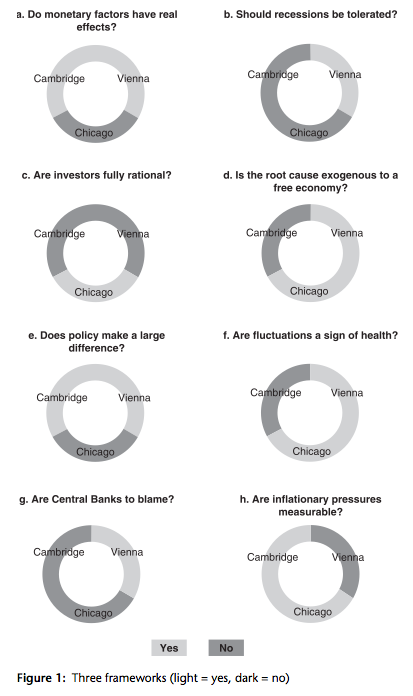By Joseph Solis-Mullen
The Panic of 1819 was one of the first major economic and financial crises in American history. The panic led to widespread bank failures, unemployment, and distress, particularly in the western states. For decades, the only significant work to have examined this event in any depth was Rothbard’s The Panic of 1819: Reactions and Policies. Now, Rothbard finally has some company in Andrew Browning’s The Panic of 1819: The First Great Depression. And while both books focus on the same historical event, their differing emphases and approaches mean they can in many ways serve to complement each other: whereas Rothbard’s monograph is primarily a meticulous study of the ideological and policy debates that followed the event, Browning’s work is largely a sweeping narrative of the political, economic, and social turmoil caused by the crisis.
Differences in Focus
As a work of historical synthesis, Browning situates the Panic of 1819 within the broader economic and political landscape of early 19th-century America, tracing the expansion of banking, land speculation, and trade that preceded the panic. His work pays particular attention to the experiences of different groups affected by the crisis – landowners, urban workers, frontier settlers, and politicians – offering a broad, human-focused narrative of the panic’s consequences. Browning broadens his scope even further, devoting significant attention to the role of international factors, including the end of the Napoleonic Wars and the decline in European demand for American agricultural products, which contributed to the economic downturn. Being a contemporary academic publication in economic history, his book is also heavily empirical, drawing from a wealth of primary sources to illustrate how the crisis rippled across different regions and social classes.
Rothbard, by contrast, approached the Panic of 1819 as a case study in economic theory and policy response, analyzing how policymakers, bankers, and intellectuals debated the causes of the crisis and what should be done in its aftermath. Rothbard, of course, saw the crisis as a product of monetary inflation and credit expansion fueled by the Second Bank of the United States, and he focused on how different groups – state governments, the federal government, and private citizens – reacted to the panic, providing a detailed discussion of policy proposals such as debt relief, banking regulations, and protective tariffs. Unlike Browning, who is more interested in describing the lived experience of the crisis, Rothbard was chiefly concerned with drawing economic lessons from the period.
Points of Agreement
Despite their differing perspectives, Browning and Rothbard do share some common ground. Both recognize the Panic of 1819 as a transformative moment in American history, one that exposed deep structural weaknesses in the country’s financial and economic system. Both also acknowledge the centrality of land speculation and easy credit in the lead-up to the crisis, as well as the severity of the economic downturn that followed.
Additionally, both authors highlight how the crisis shaped American political and economic thought in the years that followed. The panic fueled growing distrust of banks and financial elites, contributing to the rise of Jacksonian democracy and the eventual dismantling of the Second Bank of the United States. Both Browning and Rothbard see the crisis as a watershed moment in the evolution of American attitudes toward banking, debt, and economic regulation.
Points of Disagreement
While Browning acknowledges that the Second Bank of the United States played a role in crisis, he incorrectly ascribes it blame only for exacerbating the crisis through reckless lending and abrupt contractionary policy – assigning most of the blame for the onset of the crisis itself on speculative land bubbles, shifting trade dynamics, and political mismanagement.
Rothbard, in contrast, correctly views the Second Bank of the United States as the primary culprit, arguing that the inflationary credit policies of the early 1810s created an artificial boom that led to the bust of 1819. For Rothbard, the key lesson is that government intervention – particularly in the form of central banking – distorts markets, leads to economic instability, and that when a crisis inevitably comes it is further government intervention in response to that crisis which prolongs the economic downturn rather than alleviating it.
How the Two Works Complement Each Other
That admittedly serious disagreement aside, readers seeking a comprehensive understanding of the Panic of 1819 would do well to take a look at Browning’s work, for he provides a broad, richly detailed narrative. While Rothbard offers a focused economic analysis that situates the crisis within a broader theoretical framework, Browning gives readers a sense of what it felt like to live through the crisis.
Taken together, these books offer a more complete picture of the Panic of 1819 than either would alone. Browning’s work ensures that the crisis is not reduced to a mere economic abstraction, while Rothbard’s analysis highlights the policy and ideological battles that shaped the nation’s response. For those interested in both economic history and economic theory, reading these works side by side provides a deeper appreciation of how historical events and economic principles interact.
Source: https://mises.org/mises-wire/panic-1819-rothbard-v-browning



